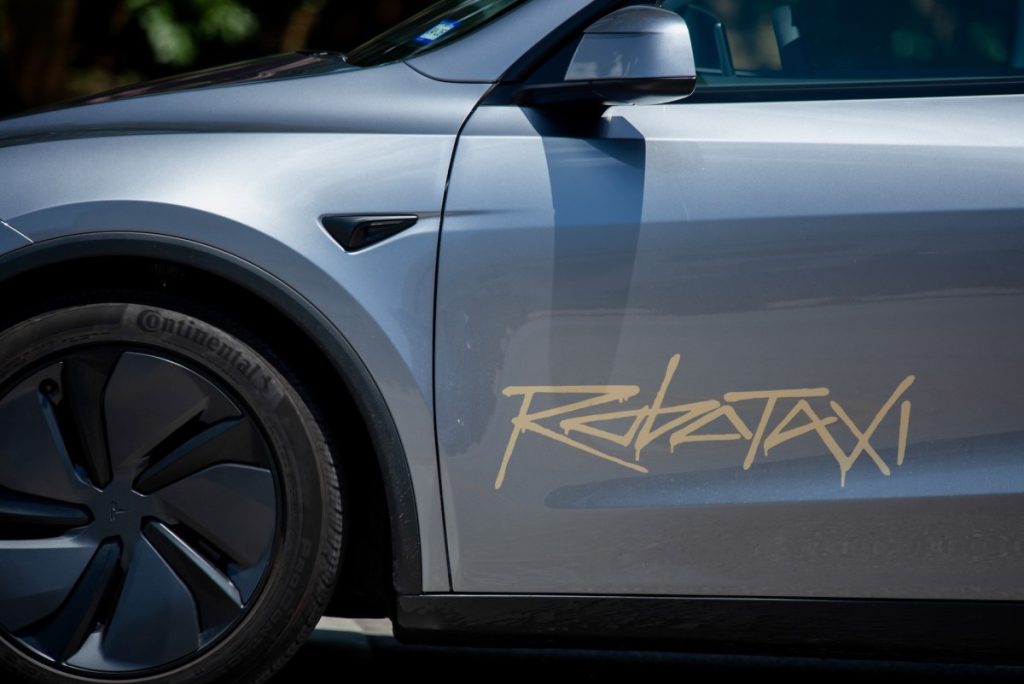Tesla’s Robotaxi Ambitions Extend to Arizona: A Deep Dive into Autonomous Vehicle Testing and Deployment
Tesla’s quest to revolutionize transportation with its autonomous “robotaxi” service has taken a significant step forward with an application to test and operate autonomous vehicles in Arizona, specifically targeting the bustling Metro Phoenix area. This move, confirmed by the Arizona Department of Transportation (ADOT) to TechCrunch, signals Tesla’s intent to expand its autonomous driving capabilities beyond its current limited rollout in Austin, Texas.
This article delves into the details of Tesla’s application, the regulatory landscape in Arizona and California, and the broader implications for the future of autonomous transportation. We’ll also analyze the potential challenges and opportunities Tesla faces as it seeks to realize its vision of a widespread robotaxi network.
Tesla’s Arizona Application: A Step-by-Step Look
On June 26th, Tesla initiated the certification process with the Motor Vehicle Division (MVD) under ADOT. The company, spearheaded by its Senior Regulatory Counsel Casey Blaine, has expressed a clear interest in operating robotaxis within the Phoenix Metropolitan Area.
The application encompasses both autonomous vehicle testing with a driver and testing/operating without a driver. This dual approach indicates Tesla’s commitment to thoroughly evaluate its autonomous technology under various conditions and eventually deploy fully driverless vehicles. A decision from the ADOT is expected by the end of the month.
Emails obtained by TechCrunch reveal that Blaine has already engaged in preliminary virtual meetings with representatives from ADOT and the Arizona Commerce Authority. These conversations focused on introducing Tesla to relevant stakeholders, including Maricopa County government and law enforcement officials, prior to any potential launch.
The Regulatory Maze: Arizona vs. California
Tesla’s robotaxi ambitions face differing regulatory hurdles depending on the state. CEO Elon Musk envisions Tesla robotaxis operating in Arizona, California, and Texas, but each state presents unique requirements.
California’s Stringent Requirements
California presents a particularly complex regulatory landscape. Companies seeking to test and deploy autonomous vehicles must navigate a series of permits issued by the Department of Motor Vehicles (DMV). These permits cover various stages, from testing with a human safety driver to deploying fully driverless vehicles.
Crucially, companies intending to operate a robotaxi service must also secure permits from the California Public Utilities Commission (CPUC). This additional layer of regulation underscores California’s cautious approach to autonomous vehicle deployment.
According to the California DMV, Tesla currently holds an autonomous vehicle testing permit for public road testing with a safety driver, a permit it has held since 2014. However, the DMV emphasizes that Tesla has not applied for a driverless testing or deployment permit. This suggests that Tesla still needs to fulfill California’s more demanding requirements before launching a commercial robotaxi service in the state.
Arizona’s Self-Certification Process
Arizona offers a comparatively streamlined regulatory process. Under Arizona statute, autonomous vehicle companies are required to follow a self-certification process for testing, with or without a driver, as outlined on the ADOT website.
This self-certification process simplifies the initial stages of autonomous vehicle testing and deployment. However, it’s crucial to understand that completing the self-certification does not automatically authorize a company to operate a for-profit robotaxi service.
To legally charge for rides, any company, whether using human drivers or autonomous vehicles, must apply for a Transportation Network Company (TNC) permit. This ensures that robotaxi services comply with safety and operational standards comparable to traditional ride-hailing companies.
Waymo’s Head Start in the Robotaxi Race
While Tesla aims to establish its presence in Arizona, Waymo, the Alphabet-owned autonomous vehicle company, already operates a successful driverless robotaxi service in the Phoenix Metropolitan Area. Waymo’s service covers approximately 315 square miles, encompassing downtown Phoenix, Tempe, Scottsdale, Chandler, and parts of Mesa, including airport transportation.
Waymo holds both the necessary AV and TNC permits in Arizona, demonstrating its compliance with state regulations. Furthermore, Waymo possesses all the required permits to deploy and operate a robotaxi service in Los Angeles and the Bay Area, along with numerous Silicon Valley cities, in California. Waymo’s partnership with Uber in Austin and Atlanta further solidifies its position as a leader in the autonomous ride-hailing market.
Waymo’s recent program allowing teenagers, with parental permission, to hail robotaxis in Phoenix showcases their commitment to expanding accessibility and integrating their technology into everyday life.
Tesla’s Robotaxi Technology: Strengths and Challenges
Tesla’s approach to autonomous driving relies heavily on its “Full Self-Driving” (FSD) system, which utilizes cameras, radar, and ultrasonic sensors to perceive the surrounding environment. This vision-centric approach contrasts with Waymo’s reliance on LiDAR (Light Detection and Ranging) technology, which provides a more detailed 3D map of the surroundings.
Tesla argues that its vision-based system is more scalable and adaptable to diverse driving conditions. However, critics point to the limitations of relying solely on cameras, particularly in challenging weather conditions or low-light environments.
Potential Strengths
- Scalability: Tesla’s existing fleet of vehicles equipped with cameras provides a vast amount of real-world driving data, enabling continuous improvement of its FSD system through machine learning.
- Cost-Effectiveness: Eliminating LiDAR sensors can significantly reduce the cost of autonomous vehicle hardware, potentially making robotaxi services more affordable.
- Integration with Existing Infrastructure: Tesla’s focus on existing roads and infrastructure could facilitate faster deployment of robotaxi services compared to solutions that require specialized infrastructure.
Potential Challenges
- Safety Concerns: Tesla’s FSD system has faced scrutiny due to safety incidents and regulatory investigations. Ensuring the safety and reliability of its robotaxi service will be paramount.
- Regulatory Approval: Navigating the complex regulatory landscape in different states and countries will require significant effort and resources.
- Public Perception: Building public trust in autonomous vehicles is crucial for widespread adoption. Addressing concerns about safety, security, and job displacement will be essential.
Analysis: Tesla’s Arizona Expansion and the Future of Robotaxis
Tesla’s move into Arizona marks a pivotal moment in the company’s pursuit of autonomous transportation. While challenges remain, including regulatory hurdles and technological limitations, the potential benefits of widespread robotaxi services are undeniable.
The potential benefits of robotaxi services:
- Reduced Traffic Congestion: Autonomous vehicles can optimize traffic flow and reduce congestion by coordinating movements and minimizing human errors.
- Increased Accessibility: Robotaxis can provide transportation options for individuals who are unable to drive, such as the elderly or people with disabilities.
- Lower Transportation Costs: Autonomous vehicles can potentially reduce transportation costs by eliminating the need for human drivers and optimizing fuel efficiency.
- Enhanced Safety: Autonomous vehicles have the potential to reduce accidents caused by human error, such as drunk driving or distracted driving.
Potential impact of Tesla’s involvement:
- Increased Competition: Tesla’s entry into the robotaxi market will intensify competition, driving innovation and potentially lowering prices for consumers.
- Accelerated Adoption: Tesla’s brand recognition and technological expertise could accelerate the adoption of autonomous vehicles and robotaxi services.
- Job Displacement: The widespread deployment of robotaxis could lead to job displacement for professional drivers, requiring retraining and support for affected workers.
- Ethical Considerations: Autonomous vehicles raise complex ethical questions about accident liability, data privacy, and algorithmic bias. Addressing these issues will be crucial for ensuring responsible deployment.
Conclusion
Tesla’s application to test and operate autonomous vehicles in Arizona represents a significant step towards realizing its vision of a fully autonomous future. While the company faces regulatory challenges and technological hurdles, its commitment to innovation and its vast fleet of data-collecting vehicles provide a solid foundation for its robotaxi ambitions.
The competition between Tesla and Waymo, along with other players in the autonomous vehicle space, will drive innovation and ultimately determine the future of transportation. As robotaxi services become more widespread, they have the potential to transform our cities, reduce traffic congestion, increase accessibility, and improve safety. However, careful consideration must be given to the ethical, social, and economic implications of this technological revolution to ensure that its benefits are shared by all.





